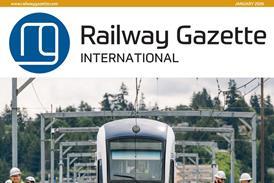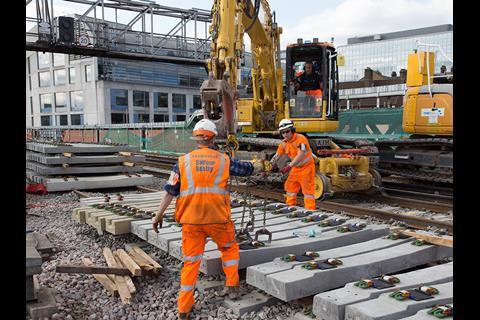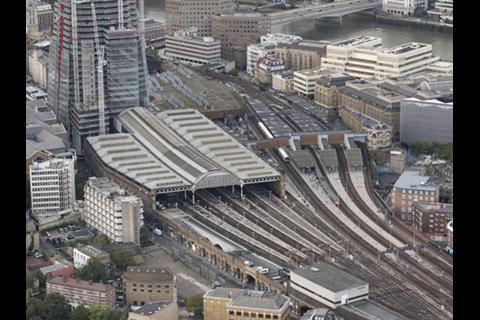UK: The Department for Transport has agreed to a proposal from Network Rail and train operator Govia Thameslink Railway which would see introduction of the full 24 trains/h timetable on the Thameslink route through central London deferred by a year to December 2019.
With a total value of £7bn, of which £5·5bn is for infrastructure enhancements, the Thameslink Programme has been underway since 2005, building on a capacity enhancement project first envisaged in the mid-1990s. The work is intended to significantly increase the number and scope of suburban services running through central London via the cross-city line between Farringdon and Blackfriars which had been reopened in 1988.
Principal Thameslink Programme works include the remodelling of stations at Blackfriars, completed in mid-2012, and London Bridge, due for completion by the end of 2018, and construction of an underground connection between the Thameslink route and the East Coast Main Line. This will allow commuter trains from Cambridge and Peterborough to reach destinations south of London from May 2018. In order to accommodate a service pattern of up to 24 trains/h, NR is equipping the core section through central London with ETCS Level 2 and intends to introduce attended ATO.
In a statement issued on November 23, the National Audit Office noted that the wider suburban network across southeast England ‘cannot yet reliably support’ the additional services envisaged under the Thameslink Programme. NAO endorsed the decision to gradually build up to the final service pattern as ‘a sensible step to protect value for money and passengers from further possible disruption due to large numbers of new services being launched at the same time’.
In 2016 NR had estimated that up to £900m of additional maintenance and renewals work would be required to achieve the resilience needed to operate the new Thameslink services reliably. Limits on access to the network mean that NR has prioritised a £300m programme of work in its South East and London North Eastern routes to improve particularly vulnerable parts of the network.
For detailed analysis of the UK rail market, subscribe to Rail Business Intelligence.











